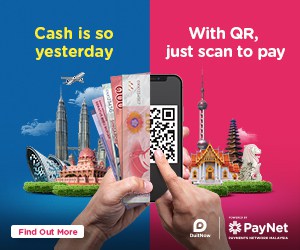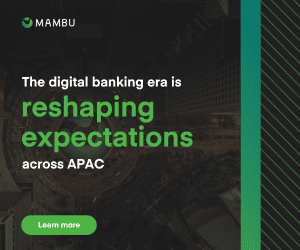The digital banking landscape in Malaysia has been undergoing a remarkable transformation since Bank Negara Malaysia issued five digital banking licenses just over a year ago. These licenses have paved the way for pioneering digital banks to revolutionise the financial industry in the country.
Digital banking is transforming the financial landscape in many countries worldwide, and Malaysia is no exception to this trend. But one question on the minds of many since mid 2022, is when exactly might the majority of these digibanks begin fullscale operations?
In a recent panel discussion at the Fintech Frontiers Conference moderated by Vincent Fong, Chief Editor of Fintech News Malaysia, prominent figures from the digital banking sector in Malaysia shared their insights and experiences on the journey of building and launching these digital banks.
The panelists included Rafiza Ghazali, Director of Digital Banking at KAF Investment Bank; Pei Si Lai, CEO of GXBank, the first and thus far only digital bank to be approved for operations in Malaysia; Melvin Ooi, Chief Executive Officer of the YTL-SEA Consortium digital bank; and Sheyantha Abeykoon, Group CEO of Boost.
Building a Bank from Scratch
The journey of building a bank from scratch is undoubtedly an extraordinary experience filled with challenges and invaluable lessons. Rafiza Ghazali emphasised that every day in the digital banking journey is a learning experience, requiring problem-solving skills and crisis management. She also highlighted the importance of a supportive team, both internally and externally, as well as the motivation derived from peer collaboration.
“I would say launching, or slightly over halfway through [towards launching their digibank], it’s been an everyday learning experience. What really sharpened my skills is problem-solving and managing crises because every day, something unexpected arises,”
said Rafiza.

Lai Pei Si (middle) flanked by Melvin Ooi (left) and Rafiza Ghazali (right)
Pei Si added to this perspective, highlighting the empowerment and learning opportunities that come with building a digital bank from the ground up. She emphasised the importance of being unburdened by legacy systems, allowing for a fresh start and a new approach to banking.
“In a bank that I was in, a lot of policies, governance, and technology were already set up. Being a blank piece of paper and starting everything from basic technology, culture, organizational model, and ways of working has been empowering,”
Pei Si shared.
Melvin underscored the need for a mindset shift when transitioning from traditional banking to digital banking. He spoke of the necessity of unlearning old habits and embracing innovative approaches to customer service and financial products.
“Unlearning what I’ve discovered actually, last few years now, then I go running into the bank, that’s even more unlearning to be done. Even more the status quo of how we think that we should actually run a bank, how we think a customer needs to be served, is actually quite different,”
Melvin remarked.
Sheyantha Abeykoon, representing Boost, highlighted their transition from an e-wallet service to encompassing a digital bank as well, describing it as a deliberate evolution. Boost’s journey involved significant changes, particularly in vendor management, as they relied heavily on technology partners to build their digital bank.
Challenges and Advantages of Being a Digital Bank
Pei Si Lai acknowledged the uniqueness of being the first digital bank to launch in Malaysia and stressed the importance of differentiating their banking services through a superior user experience. She emphasised the role of technology and cost-efficiency in offering value to customers.
“What’s the value that you can bring that others couldn’t, or others don’t bother? And that is where I talk about the technology, talk about the costs, so that it makes sense to do it while others may not want to do that,”
she said.

Melvin Ooi speaks while Sheyantha Abeykoon (left) and Pei Si look on
Melvin pointed out that digital banks must focus on providing value, convenience, and personalisation to customers. Convenience plays a pivotal role, as digital banks must make onboarding and accessing financial services as straightforward as possible.
“How do you personalise it because more often than not, you walk into a more traditional conventional bank, you ask the simple question, ‘I want to run a business, I need to pick up a loan,’ and they may turn around and ask you if you want an overdraft or a credit card. So how much can you learn from the customer through a digital means?”
he questioned.
The road to digibanking was different for Sheyantha.
“So if you ask me about our journey, it began when there was noise about a digital bank license coming out. For me, the journey began then. It was a challenge back in 2019,”
he went on.
Sheyantha stated emphatically that being a technology-first company gave Boost an edge in terms of technology expertise. However, their transition into banking involved learning new skills and managing vendor relationships.
The Challenges of Capital Requirements

The discussion also touched upon the challenge of capital requirements for digital banks in Malaysia. Rafiza Ghazali explained that the initial asset limit of RM3 billion imposed by Bank Negara Malaysia is a guardrail rather than a permanent limitation. Digital banks must prove their viability and become real banks before graduating from the foundational phase.
“It forces all of us to think a lot more laser-sharp on exactly what we want to deliver and how we want to deliver it,”
Rafiza explained.
Pei Si of GXBank added her perspective, noting that while the asset cap presents challenges, it also pushes digital banks to think more strategically about their operations and growth.
“The asset cap enables us to think more laser-sharp on what we want to deliver and how we want to deliver it. It forces us to do so,”
said Pei Si.
Sheyantha pointed out that while the capital requirement presents challenges, it also forces digital banks to focus sharply on their objectives and be creative in their approach to profitability during the foundational phase.
Future Graduation and Expansion Plans
And graduation might be the key question facing these banks, with graduation being the period which signifies the transition from a foundational phase to a more established digital bank. The panelists acknowledged that the timeline for graduation is uncertain and depends on meeting certain milestones.
Rafiza mentions that graduating from the foundational phase is a significant milestone, and that the process involves proving their ability to become a full-fledged bank.
“When can we graduate? We do not know. But what I know is that we are extremely focused to make sure that we’ll be able to hit different milestones,”
she clarified.
Pei Si added that the asset cap is meant to serve as a guide during this foundational phase, with graduation contingent on proving the digital bank’s capabilities. GXBank is taking a cautious approach in its foundational stage, opening services to the employees of its investors first as a sort of beta test.
“When we look at the asset cap, it is really meant for you to prove your capabilities, that you can become a real bank,”
Pei Si noted.

For his part, Boost’s Sheyantha said that graduation will occur when digital banks are ready, and capable of serving the market effectively.
“The asset cap is there, and it is a bit challenging for us to plan, but we are ready for it. And I think that for us, we will graduate when we are ready,”
he stated.
The panelists also discussed their expansion plans beyond the Malaysian market. Pei Si placed emphasis in the importance of scaling efficiently.
“We see Malaysia as a great launchpad into the Southeast Asia region. But as with any business, scalability, efficiency, effectiveness are super important,” she mentioned.
Melvin on the other hand thinks the YTL-SEA Consortium’s digital bank needs to tailor their approach to the unique needs of the Malaysian market.
“Given the context of Malaysia, its unique context, unique size, the unique requirements, unique ecosystem, we need to adapt our plan according to these unique requirements,” Melvin stated.
Differentiating Malaysia’s Digital Banks
The conversation moved towards differentiation, considering that Islamic banks in Malaysia are also entering the digital banking space. Rafiza clarified that differentiation is essential, and KAF Investment Bank focuses on a niche target audience rather than trying to emulate others. Providing a unique user experience and building trust remotely through the app and other touchpoints are key strategies.
Pei Si Lai echoed this sentiment, saying that digital banks in Malaysia must capitalise on their ability to serve digital natives and offer a differentiated customer experience.
Melvin added that differentiation should revolve around delivering value, convenience, and personalisation to customers. Understanding customer needs and offering tailored solutions are crucial in setting digital banks apart.
Addressing Financial Inclusion

Financial inclusion and accessibility were also discussed. The panelists acknowledged that digital banking in Malaysia aims to reach underserved areas, particularly in rural regions.
They stressed the importance of improving digital and financial literacy and called for collaboration between banks, the industry, and the government to enhance the digital infrastructure.
Comparing Malaysia to Other Markets
The conversation concluded by examining the differences between digital banks in Malaysia and those in other markets like Hong Kong and Singapore. The panelists noted that Malaysia’s regulatory environment, population size, and ecosystem present unique challenges and opportunities.
The roundtable discussion highlighted the excitement and challenges of building and launching digital banks in Malaysia. While there are unique hurdles to overcome, the panelists expressed confidence in the potential for these banks to make a significant impact on the country’s financial landscape.
The digital banking journey in Malaysia is not just a path to profitability but also an opportunity to drive financial inclusion and innovation, ultimately benefiting both customers and the industry as a whole.
Watch the full “A New Challenger Appears: Progress on Malaysia’s Digibanks” panel at the Fintech Frontiers Conference









